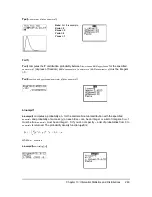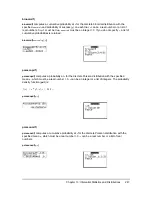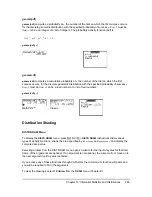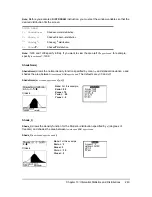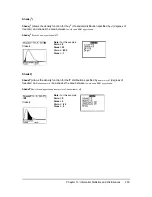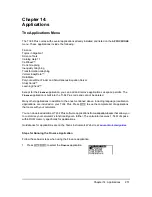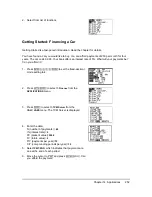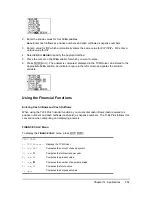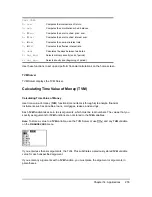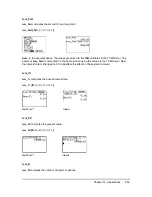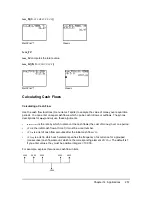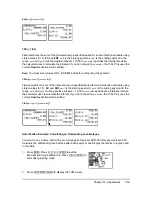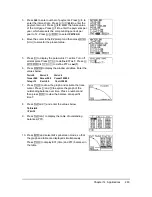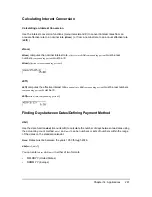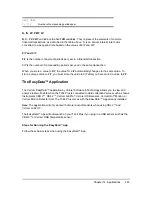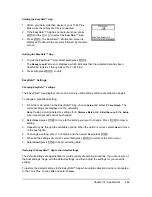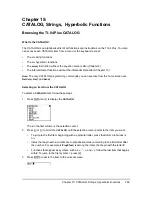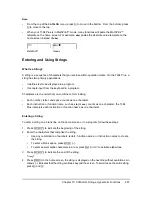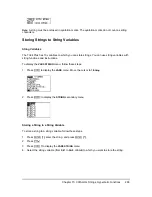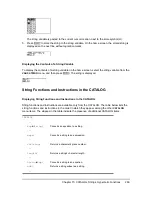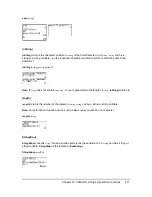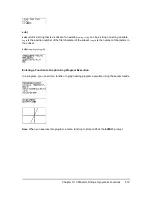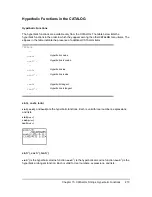
Chapter 14: Applications
259
bal(
npmt
[
,
roundvalue
]
)
G
Prn(,
G
Int(
G
Prn(
computes the sum of the principal during a specified period for an amortization schedule using
stored values for
¾æ
,
PV
, and
PMT
.
pmt1
is the starting payment.
pmt2
is the ending payment in the
range.
pmt1
and
pmt2
must be positive integers < 10,000.
roundvalue
specifies the internal precision
the calculator uses to calculate the principal; if you do not specify
roundvalue
, the TI-84 Plus uses the
current
Float/Fix
decimal-mode setting.
Note:
You must enter values for
æ
,
PV
,
PMT
, and before computing the principal.
G
Prn(
pmt1
,
pmt2
[
,
roundvalue
]
)
G
Int(
computes the sum of the interest during a specified period for an amortization schedule using
stored values for
¾æ
,
PV
, and
PMT
.
pmt1
is the starting payment.
pmt2
is the ending payment in the
range.
pmt1
and
pmt2
must be positive integers < 10,000.
roundvalue
specifies the internal precision
the calculator uses to calculate the interest; if you do not specify
roundvalue
, the TI-84 Plus uses the
current
Float/Fix
decimal-mode setting.
G
Int(
pmt1
,
pmt2
[
,
roundvalue
]
)
Amortization Example: Calculating an Outstanding Loan Balance
You want to buy a home with a 30-year mortgage at 8 percent APR. Monthly payments are 800.
Calculate the outstanding loan balance after each payment and display the results in a graph and
in the table.
1. Press
z
. Press
† ~ ~ ~ Í
to set the
fixed-decimal mode setting to
2
. Press
† † ~ Í
to
select
Par
graphing mode.
2. Press
Œ Í Í
to display the TVM Solver.


